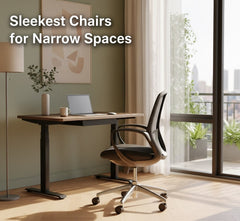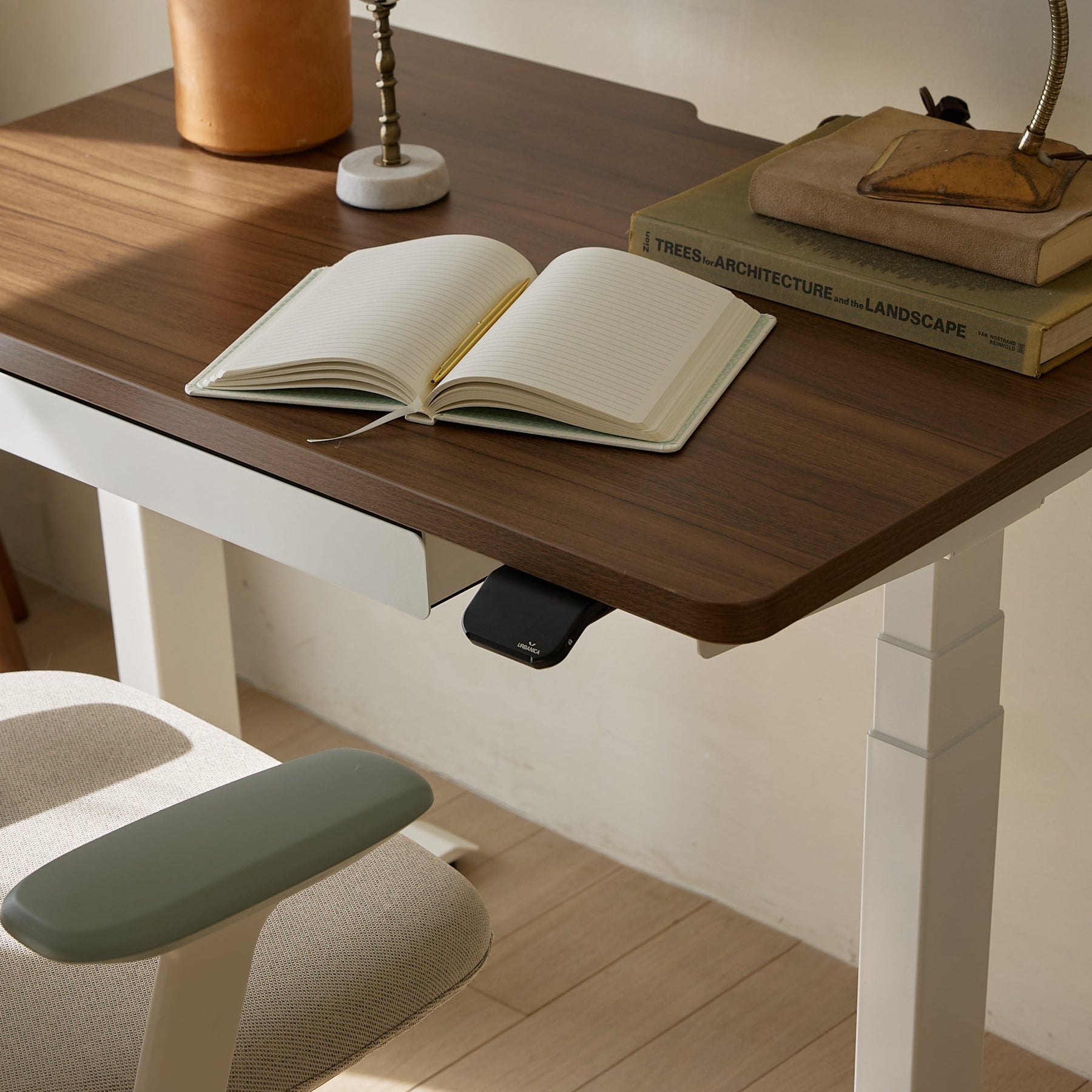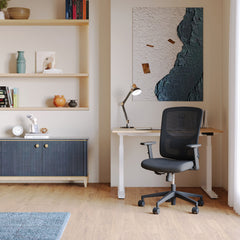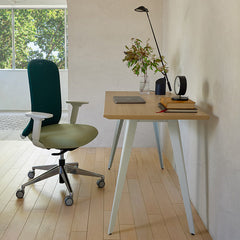Get 10% off your first order
Find the office furniture that’s designed to match your style, comfort, and needs perfectly. Subscribe
Sleekest Chairs for Narrow Spaces

Visit quiz page to see how we makes it easy to create an inspiring workplace


In interior design, few pairings offer the versatility and visual interest of wood and metal. Wood brings warmth, history, and organic texture; metal introduces sleekness, industrial edge, and structural definition. When used correctly, these two elements create a balanced, contemporary look that is both sophisticated and grounded. The challenge lies in achieving harmony—preventing the metal from feeling too cold and the wood from feeling too rustic.
This blog explores the techniques interior designers use to seamlessly integrate these contrasting materials. The key is to treat them not as opposites, but as complementary textures and tones. By understanding scale, finish, and placement, you can transform a plain room into a space with depth, character, and enduring style.
The appeal of mixing wood and metal is rooted in human psychology. We are naturally drawn to balance. Wood represents nature and comfort, while metal represents strength and technology. A room that successfully combines both feels balanced, stable, and intellectually stimulating. This deliberate contrast elevates a space beyond the homogenous look of all-wood or all-metal furniture.
Even in high-tech workspaces, this balance is crucial for comfort and focus. A height-adjustable standing desk often features a strong metal frame combined with a warm wooden top, demonstrating the perfect functional marriage of durability and approachable design.
A balanced room should establish one material as dominant, with the other acting as an accent. A simple rule of thumb is the 70/30 split: 70% of the dominant material (often wood) providing the overall warmth, and 30% of the secondary material (metal) providing contrast and definition.
The wooden elements typically form the largest pieces in the room: flooring, larger cabinets, or the main desktop surface. This establishes a baseline of warmth and softness that prevents the metal accents from overwhelming the space.
Warm Woods (Oak, Walnut): These are naturally dominant and pair well with cool metals like polished steel or matte black.
Light Woods (Maple, Ash): These need stronger, darker metals like aged bronze or blackened iron to provide necessary visual weight.
The finish of the metal and the tone of the wood must be chosen deliberately to complement each other. Mixing too many different metal finishes (e.g., gold, chrome, and matte black) can look chaotic, just as mixing too many wood species can feel busy.
Metal finishes fall into categories of cool (chrome, polished nickel), warm (brass, copper, gold), and neutral (matte black, gunmetal). Generally, aim to keep the metal finish consistent across the main accents in the room.
Metal Finish Pairing Guide (Table):
|
Wood Tone |
Best Metal Finishes |
Design Style Emphasis |
|
Dark Walnut |
Brushed Brass, Copper, Matte Black |
Mid-Century Modern, Industrial |
|
Light Oak |
Matte White, Polished Chrome, Nickel |
Scandinavian, Minimalist |
|
Reclaimed/Rustic |
Blackened Iron, Aged Bronze |
Farmhouse, Industrial Chic |
Metal is best used for structural elements and refined details. This allows the material to highlight the form of the furniture without covering the natural beauty of the wood.
Look for pieces where the metal is intentionally used to support or outline the wooden component. This creates visual lightness and defines the object's geometry. For example, a modern office desk with a solid wood top supported by thin, architectural metal legs achieves a sophisticated fusion.
Metal Application (Checklist):
☐ Table Legs/Bases: Using metal here provides structural integrity and a clean, sharp contrast to the wooden tabletop.
☐ Hardware: Drawer pulls, handles, and hinges offer small, repeated points of metallic texture.
☐ Lighting Fixtures: Pendants and floor lamps are perfect places to introduce a consistent metal finish.
☐ Thin Frames: Mirror frames or art frames in metal can tie the room’s metallic accents together.
The most powerful aesthetic tool in this pairing is texture. The raw, visible grain and knots of wood provide organic texture, while metal provides a hard, smooth, reflective, or matte surface. Using this contrast intentionally prevents the room from falling flat.
Do not try to match the textures; accentuate their differences.
Highly Grained Wood: Use a natural or lightly finished wood with visible knots and grain lines, and contrast it with sleek, polished metal surfaces (like polished chrome).
Smooth Wood: Pair highly finished, smooth wood surfaces (like lacquered walnut) with textured metals (like hammered brass or wire mesh) to add complexity.

Metal, unlike wood, is highly reflective. Using lighting to intentionally catch the metallic surfaces will add sparkle, dynamic movement, and visual interest to the room, especially at night.
Position task lighting or directional spotlights to catch the metallic legs of a table or the hardware on a cabinet. This highlights the architectural details and creates dramatic shadows and highlights.
Lighting Techniques (Enumeration):
Spotlight Metal Frames: Use directional spotlights near metal-framed furniture to emphasize their form.
Reflective Surfaces: Place metallic objects (vases, trays) near a window to allow natural light to reflect and warm up the metal tone.
Matte vs. Gloss: Use matte black metal near bright light to absorb light and create visual weight, and use polished chrome in dimmer areas to subtly reflect any ambient light.
Wood connects us to nature, an effect known as biophilia, which has proven psychological benefits. Metal, while industrial, can be softened when balanced with wood, creating a space that feels both grounded and stimulating.
A room that features natural wood and strong, structural metal offers a sense of stability and authenticity. This balance directly contributes to a comfortable, non-sterile atmosphere, which is important for long hours of work.
The inclusion of natural elements, such as wood grain, has been linked to improved well-being. A study on work engagement and well-being suggests that environmental factors, including the quality and naturalness of materials, play a significant role in minimizing stress and improving concentration.
The wood and metal combination is versatile and can anchor several design styles. Understanding how to vary the proportions allows you to lean into a specific aesthetic, from rustic farmhouse to sleek industrial.
To achieve an Industrial look, increase the percentage of matte black metal, exposed hardware, and rougher, reclaimed wood. To achieve a Mid-Century Modern look, focus on smooth, elegant woods like walnut, paired with polished, slender brass or gold hardware.
Industrial Chic: High contrast (dark wood, matte black metal), exposed fasteners, and clean lines.
Modern Farmhouse: Rustic, pale wood (reclaimed pine) with simple, heavy iron hardware.
Scandinavian Modern: Pale wood (birch) with minimal, soft metal accents (white or light gray metal frames).
The quality of the materials is paramount to the longevity and aesthetic success of the fusion. Look for solid wood tops that are structurally integrated with durable metal bases.
A thin or wobbly metal base will undermine the stability of a solid wooden top, and vice versa. High-quality furniture ensures that the materials are symbiotic, not just stacked.
Quality Indicators (Checklist):
☐ Welding: Look for clean, smooth welds on the metal frames.
☐ Finish Adhesion: Ensure the metal finish (paint or powder coat) is uniformly applied without blemishes.
☐ Wood Grain Integrity: The wood surface should have a consistent finish that highlights the natural grain without excessive filler or patches.
☐ Structural Joining: Check that the metal and wood components are securely joined, resisting movement or wobble.
In smaller spaces, the heaviness of certain wood and metal combinations can overwhelm the room. The goal is to maximize the visual lightness while retaining the strong contrast.
To achieve visual lightness in compact settings, prioritize pieces with thin, architectural metal frames and open bases. For example, a Small Standing Desk New Hampshire with a minimal metal frame and a light wood top maintains the aesthetic balance without adding bulk, which is ideal for small footprint areas.
Metal Color: Choose lighter metal colors (white, chrome) over heavy black iron for bases.
Open Storage: Use open metal shelving instead of solid wooden cabinets to allow light to pass through.

In an office setting, the combination of materials is particularly effective. The durability and clean lines of metal support the functional aspects of the workspace, while the wood provides the necessary warmth and reduces the sterile feel often associated with purely commercial furniture.
Even highly functional ergonomic components can integrate beautifully. A precision adjustable tool, such as an ergonomic monitor arm, often utilizes sleek metal construction. When this metal component is placed on a warm wooden desk surface, it creates a striking visual contrast that is both highly functional and aesthetically pleasing. The metal adds the professional edge, and the wood grounds the space in comfort.
Mixing wood and metal is more than a design trend; it is a timeless dialogue between the organic and the engineered. By adhering to the principles of tonal harmony, structural contrast, and textural balance, you move beyond simply furnishing a room. You are actively designing an environment that is both visually engaging and emotionally balanced. Let the wood bring the warmth, and let the metal bring the structure. This fusion ensures your space is built for enduring style and comfortable, focused living.

Sleekest Chairs for Narrow Spaces

Pairing the Perfect Chair with a Dynamic Desk

Ergonomics on a Budget: Hacks for a Healthy Work Setup
Get 10% off your first order
Find the office furniture that’s designed to match your style, comfort, and needs perfectly. Subscribe
Leave a comment